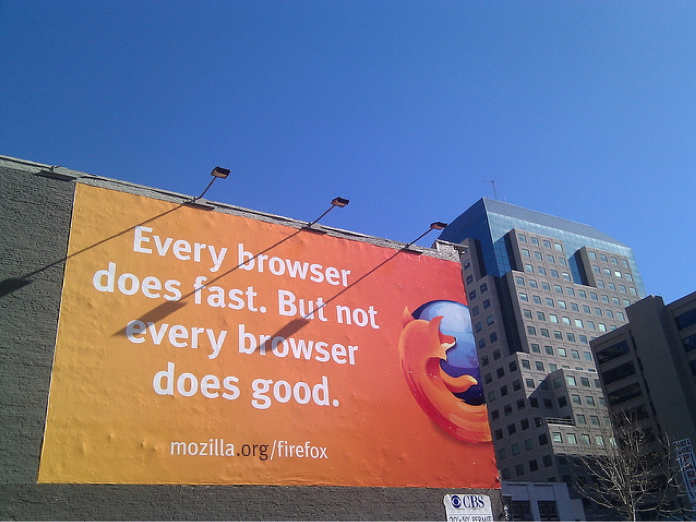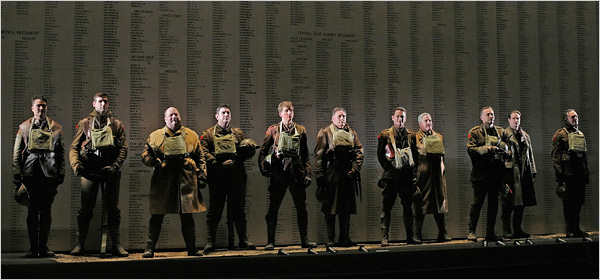Last fall, I was walking with a friend on the expansive brilliantly white patio outside the Kennedy Center in Washington, DC. It was a hot day, and when my friend needed to take a call, I snuck out of the sun to stand under the large flat roof of the building in the shade, next to the cool marble walls. The building is huge, a true monolith, and as I was looking up at the architecture, one of the many quotes they have engraved on the Kennedy Center’s walls caught my eye: “This country … [Read more...]
Social Media and the Arts: a groundbreaking new study
In my role at Theatre Bay Area, I commissioned Devon Smith of 24 Useable Hours (and now, of Threespot in Washington, DC) to conduct what she termed a Social Media Audit of the arts and cultural sector. In an effort to provide guidance to the field, Theatre Bay Area commissioned “The Tangled Web: Social Media in the Arts” in conjunction with a year-long intensive workshop series called Leveraging Social Media. This series, designed by noted social media expert Beth Kanter, provides Bay Area … [Read more...]
Sydni and the Green Feather
This past Saturday, I took a drive through a ferocious, and unseasonably late, rainstorm to the house of an eleven-year-old theatregoer named Sydni. I was interviewing Sydni and her mother, Sarah, as part of the research into the intrinsic impact of art that we are conducting/commissioning at Theatre Bay Area, in this case video interviews with a small group of everyday theatre patrons to understand why they go to theatre, why they value it, and what it means to them. We were videotaping … [Read more...]
Syncing Brainwaves Through the Fourth Wall
What is actually neurologically involved in communication? What does it take for a speaker to convey something to a listener, and what does it take for that listen to both comprehend what's being said and remember it? In a paper published in August 2010 in the scientific journal Proceedings of the National Academy of Science (PNAS) called (dryly) "Speaker-listener neural coupling underlikes successful communication," three researchers from Princeton University detail an experiment that … [Read more...]
Co-Opting Public Value
San Francisco is big on non-profit alternatives. I know this because we’ve done some asking around (and looking at other research) as we attempt a brand realignment on our TIX Bay Area discounted ticketing service. It turns out that, all other things being equal (a big caveat), a good percentage of Bay Area consumers will opt for a socially-helpful version of a service over a straight-up corporate one. As such, we will be touting the fact that we’re the only non-profit ticketing vendor in the … [Read more...]
We Are The Memory Pushers
What we traffic in is memories. Theatre, particularly, but all the arts, are representations of abstracted or concrete parts of this world, pushed out from artists to audience with the goal of sticking in the head. We are memory makers, and it's important that we try not to forget that when we're building out experience packages and talking about the value we have to audiences in our materials. Daniel Kahneman, a Nobel laureate and founder of behavioral economics, has spoken eloquently about … [Read more...]
How Do We Make People Care (Again)?
In March, arts advocate Arlene Goldbard spoke at the Association of Performing Arts Service Organizations conference in Austin. Goldbard believes we need to start using a more empowered (and less-numbers-based) vocabulary for arguing for the value of the arts. At one point she noted: “The best argument for arts education is that children today practice endlessly interacting with machines, developing a certain type of cognitive facility. But without the opportunity that arts education affords to … [Read more...]
We Need New Beans to Count
As an industry, the arts suffers from a value problem. This was thrown into sharp relief for me in an interview I had with an artistic leader from rural Wisconsin, who pointed out, “We’re all bean counters because the people we deal with, what they count is beans.” In almost everything we do to advocate for the arts, we place financial worth front and center, and in so doing we allow, even encourage, the people we’re trying to convince of art’s value to forget that that value is much more than … [Read more...]








